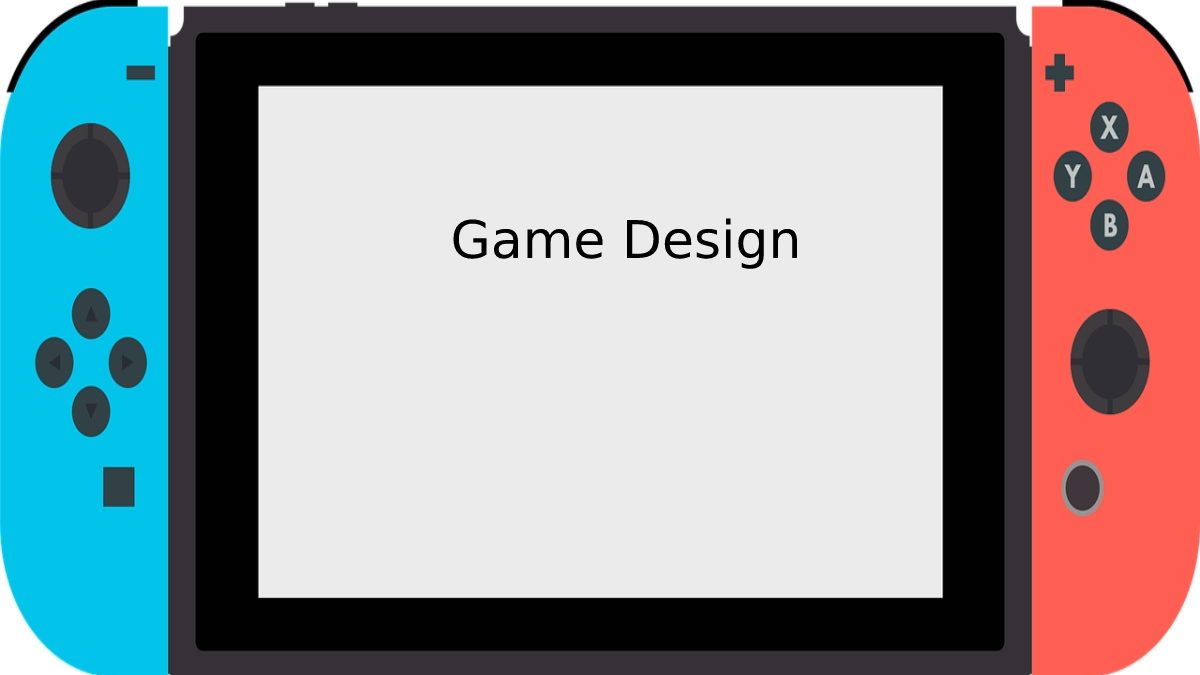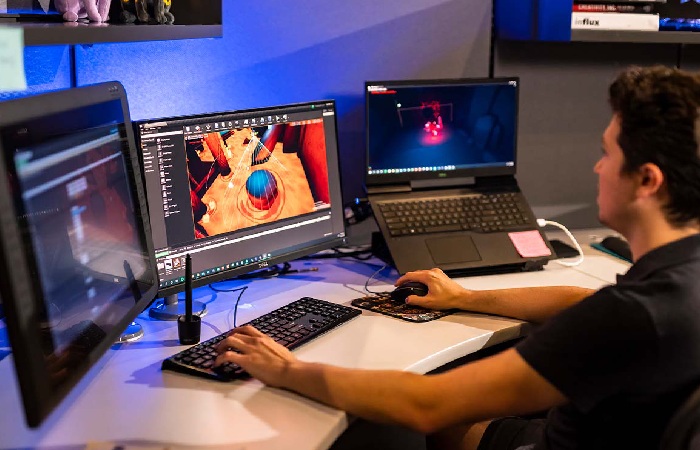Table of Contents
What Is Game Design?
Game design is a broad field that draws on computer science/programming, inspired writing, and graphic design. Game designers take the creative lead in imagining and bringing video game worlds to life. It makes the globals students comprehend the nature of designing games, to distinguish the discipline from other specialized game jobs, and it teaches students how game design graduates are made ready to become part of a development team when working on a project.
Videogames are a very lucrative part of the US economy and beyond and more professions related to game creation arise every day. Concurrently with this trend, the number of international students who want to turn their sweet passion for video games into a career as game designers is increasing.
Roles In A Development Team:
Game design is a diverse field that allows graduates to design and create their universe of video games.
Here are some options:
- level designer
- Game Writer/Story Developer
- Game Artist/Content Designer
- Programmer/System Designer
- world designer
- interface designer
International students studying Game Design learn both the overall process of creating a video game and the individual elements of software development, programming, and graphic design used in the actual construction of the game to get the most out of studying Game Design and improve To be able to meet the rapid advancement opportunities in a development team, international students should decide on a specific specialization at an early stage.
What Does A Video Game Designer Do?
A game designer is a creative engine responsible for bringing a game to life. He is usually a mixture of author, artist, and programmer. “It’s a multidisciplinary work that often requires you to understand a little bit of everything,” says Troy, who has released over 100 titles across almost every platform and genre.
“It’s not just about playing games and coming up with ideas. Not only do you need to understand how to apply your concepts to many different and often conflicting areas of game design, but you also need to understand HOW to design, WHAT to create, WHEN to develop each feature, and WHY to plan;
Employment Opportunities
Getting a great job in the industry takes hard work and dedication. The reward, of course, is being able to make video games for a living! It would help if you had technical knowledge and artistic skills and an understanding of how to create something fun, engaging, monetizable, and addictive for gamers. Because it’s such a diverse industry, you may have to wear many hats. Likewise, a team of 5-10 people functions in a different manner to 1,000+ people like Ubisoft or EA.
It is also to be kept in mind that by studying game design you won’t definitely become a “game designer”. There are many shifting jobs available, and with technology changing as quickly as it is, new jobs are being created every day.
Some Of The Roles Include:
- game author
- story developer
- game artist
- content designer
- Programmer/System Designer
- World or level designer
- User interface designers
- Junior Designer or Leader
- creative director
- Software (game engines)
There is a wide variety of software to choose from, some requiring more programming skills than others. However, if you want to create games professionally, try to learn the industry-standard game engines used by major studios, such as B. Unreal Engine.
The Future of Game Design
Game Design Software Tools You Container Use to Make Your Games
a game design workshop to size your own game. Anyone with the passion, data, and skills for game design can build and issue their own game. You’ll need to choose which game design software to bring your ideas to life. In this post, you’ll learn about three general game design software tools, each with free or low-cost choices and tons of classes and guides existing crossways the web.
GameMaker Studio 2
Amongst the best game design software choices for students to test with, GameMaker Studio 2 landscapes an easy-to-use drag-and-drop line for variables and game reasons so that you can shape entire games without any meaningful code. However, a background in the C software design language will be handy for using the software’s scripting language, GML, to further alter your ready.
The GMS 2 free type limits you to reproducing games to Windows with a waterline, but varieties with full export to Windows, Mac, HTML5, iOS, Android, and more start about $100 and up.
Unity
Unity is one of the commerce’s most controlling and widely used game design software tools, letting you create 2D and 3D games for nearly any system—including Spaces, Mac, iOS, Android, Facebook, Oculus Rift, Steam VR, PS4, XB1, Wii U, and Switch. Using Unity requires knowing some C software design. Although Unity offers beginners classes if you’re willing to dive in on your own. While Unity wires game design assets are created in 3ds Max, Maya, Blender, and similar software, Unity’s asset store also offers an impressive selection of high-quality visuals, models, the situation feels, and other free and for-sale items.
While Plus and Pro plans are offered. Unity’s free type has everything you need to build awesome games and is royalty-free for anyone with game incomes under $100,000 per year.
Unreal Engine 4
Because it’s crowded with cutting-edge, progressive features. Unreal Engine 4 (UE4) likely has the highest learning curve of these three game design package tools. But it’s perhaps also the most professional. UE4’s unique feature is its Blueprint system, which allows users to quickly develop complex game logic and entire games without ever interacting with a single code. Don’t worry; those who prefer to code also have that choice.
Like other game design software declared, Unreal makes it easy to export to popular platforms. Crossway mobile devices, computers, gaming consoles, and VR systems. Their sum model is also based on the success of the games you create so that you can use them. The software is for free, but any time you earn $3,000 in a sector you pay a 5% royalty on your total revenue.
Conclusion
Game design sits under the broader field of video development and also refers. The use of creativity and design to develop for entertainment or educational purposes. It involves creating compelling stories, characters, goals, rules, and also challenges that drive interactions with other characters, users, or objects.
Game design is an exciting, rewarding, and also multi-faceted field with promising job prospects. However, becoming a game designer can be a challenging journey. Passion, patience, and persistence are essential!





